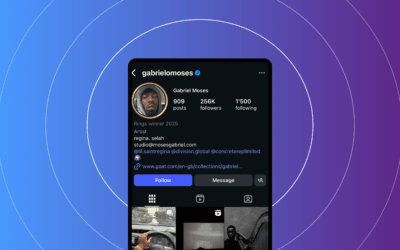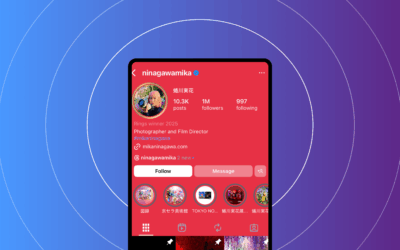Les leaders d'opinion en marketing 2025 : Définitions, types, et comment les spécialistes du marketing créent de l'influence
Si vous évaluez des leaders d'opinion pour des campagnes ou si vous planifiez votre propre plateforme exécutive, vous obtiendrez trois choses ici : des définitions claires, une décomposition des trois types de leaders et un manuel pratique pour construire une influence durable. Les études sectorielles et les meilleures pratiques d'organismes tels que la Harvard Business Review et le Content Marketing Institute montrent qu'un leadership éclairé régulier et fondé sur des preuves améliore l'autorité de la marque et le pipeline B2B. Nous renvoyons à des ressources fiables lorsque cela s'avère pertinent. (sources indiquées à la fin de la section)
Que sont les leaders d'opinion ?
Un leader d'opinion est une personne qui combine une expertise démontrable, des idées ou des cadres originaux, et un historique régulier d'idées fondées sur des preuves. Ils font évoluer les marchés en changeant la façon de penser ou d'agir d'un public cible. Dans la pratique, ils sont mesurés par leur crédibilité, leur portée et leur impact.
Des distinctions rapides permettent de séparer les voix crédibles des voix fortes. Un influenceur attire souvent l'attention à court terme, tandis qu'un leader d'opinion suscite la confiance et des décisions à long terme grâce à une vision originale et à des preuves reproductibles. Un expert fournit des connaissances approfondies ; un leader d'opinion transforme ces connaissances en cadres partageables qui modifient les comportements.
Dans la pratique, les leaders d'opinion publient régulièrement, présentent des données ou des modèles structurés et sont cités par leurs pairs, les analystes et les médias. Le résultat est l'adoption : les acheteurs testent votre modèle, les dirigeants font référence à votre travail et les journalistes utilisent votre cadre pour raconter une histoire.
Pour les chercheurs et les spécialistes du marketing à la recherche de sources crédibles, voir McKinsey Insights sur la valeur des preuves et de la confiance dans la communication des dirigeants (consulté en septembre 2025) :
McKinsey Insights.
Source : McKinsey Insights - https://www.mckinsey.com/featured-insights (consulté en septembre 2025)
Pourquoi les leaders d'opinion sont-ils importants pour le marketing en 2025 ?
- Autorité de la marque et différenciation. Dans les catégories SaaS surchargées, les idées originales créent un récit défendable. Un cadre nommé ou un rapport de référence est plus difficile à copier qu'une liste de caractéristiques - et plus mémorable dans la salle de conférence.
- Génération de la demande et retour sur investissement du contenu. Les documents de réflexion - rapports, cadres et explications - attirent les liens organiques et le trafic de recherche qualifié, tout en apportant des preuves aux vendeurs.
- Confiance et prise de décision. Les acheteurs accordent plus d'importance à l'expertise acquise et à la validation par un tiers qu'aux publicités. Le contenu soutenu par des analystes et des études accélère le consensus au sein des comités d'achat.
En pratique, il faut investir dans un contenu de qualité, fondé sur des données probantes (données primaires, études de cas, cadres reproductibles) et intégrer la distribution dans le plan dès le premier jour.
Sources : Harvard Business Review ; Content Marketing Institute : Harvard Business Review ; Content Marketing Institute. HBR, CMI (consulté en septembre 2025)
Les trois types de leaders d'opinion
Tous les leaders d'opinion n'influencent pas de la même manière. Le fait d'associer le bon type de leader d'opinion au bon objectif permet d'accélérer l'impact. Les trois types de leaders d'opinion sont définis ci-dessous, avec les résultats typiques et les meilleures utilisations marketing.
Type 1 - Leaders d'opinion dans un domaine ou un sujet donné
Définition : Les leaders de domaine sont des experts techniques ou de niche dont l'autorité provient de recherches originales, de brevets ou d'une longue expérience de praticien.
Signaux et résultats : Articles évalués par des pairs, articles techniques, conférences sur des créneaux particuliers et références à fort taux de citation.
Meilleure utilisation : Contenu axé sur les produits, relations avec les développeurs et livres blancs techniques qui réduisent les risques pour les évaluateurs.
Exemple : Neil Patel sur le marketing numérique et le référencement. (Référence, accès Sept 2025)
Source : Neil Patel - https://neilpatel.com (consulté en septembre 2025)
Type 2 - Leaders d'opinion stratégiques / commerciaux
Définition : Les leaders stratégiques façonnent les modèles d'entreprise et la réflexion sur la mise sur le marché. Ils fournissent des cadres pour les décisions de la direction.
Signaux et résultats : Livres, articles de style Harvard, articles d'opinion, rôles consultatifs et cadres stratégiques utilisés par les clients.
Meilleure utilisation : Série de contenus pour les cadres, tables rondes pour les chefs d'entreprise et recherche pour les acheteurs et les conseils d'administration.
Exemple : Simon Sinek, avec le leadership axé sur l'objectif et le modèle "Start With Why" (Référence, accès septembre 2025).
Source : Simon Sinek - https://simonsinek.com (consulté en septembre 2025)
Type 3 - Leaders d'opinion comportementaux/culturels
Définition : Les leaders comportementaux ou culturels façonnent le comportement des consommateurs et les récits des catégories par le biais de la narration et de la présence dans les médias.
Signaux et résultats : Essais viraux, conférences, podcasts et influence intersectorielle qui modifient les sentiments et les actions.
Meilleure utilisation : Storytelling de la marque, adoption de la catégorie et création d'une communauté pour la portée et la résonance émotionnelle.
Exemple : Gary Vaynerchuk - une narration pleine d'énergie et des conseils sociaux pratiques (Référence, accès septembre 2025).
Source : Gary Vaynerchuk - https://www.garyvaynerchuk.com (consulté en septembre 2025)
Comparaison rapide :
Domaine → vérité technique ; Stratégique → cadres exécutifs ; Comportementale → résonance culturelle.
Sources : Seth Godin, Ann Handley, Jay Baer Seth Godin, Ann Handley, Jay Baer références listées dans l'article. Voir les exemples en bref pour plus d'informations.
Comparaison rapide (objectif → résultats → signaux → adéquation de la collaboration)
- Domaine : vérité technique → recherche, démonstrations → citations, brevets → crédibilité du produit et contenu technique.
- Stratégique : cadres exécutifs → livres, articles d'opinion → rôles consultatifs, utilisation du conseil d'administration → campagnes exécutives et relations avec les analystes.
- Comportemental : résonance culturelle → conférences, podcasts → croissance de la communauté, viralité → storytelling de la marque et éducation de la catégorie.
Pour une comparaison plus approfondie, voir le marketing d'influence et les médias sociaux (externe) : marketing d'influence vs médias sociaux.
Leaders d'opinion américains contre leaders d'opinion mondiaux
Les leaders d'opinion américains opèrent souvent avec un cadre, des canaux médiatiques et des conférences centrés sur les États-Unis. Les leaders mondiaux se localisent en publiant dans plusieurs langues et en s'adaptant aux normes régionales.
Pour les campagnes ciblant les acheteurs américains, s'associer avec des voix américaines visibles dans les médias américains. Pour les efforts multinationaux, rassemblez des leaders régionaux qui apportent des données régionales crédibles et des preuves locales.
Exemples : Seth Godin (américain) et Ann Handley (basée aux États-Unis) assurent la crédibilité des États-Unis ; les leaders mondiaux associent des idées à des données régionales pour les marchés APAC/EMEA (références ci-dessus).
Comment identifier les leaders d'opinion
Utilisez une liste de contrôle simple, fondée sur des preuves, pour distinguer les voix crédibles du bruit.
- Cadence de publication : travail original régulier (trimestres au moins).
- Citations et backlinks : 50+ backlinks substantiels ou 100+ citations dans des publications réputées.
- Discours et reconnaissance par les pairs : discours lors d'événements reconnus ou rôles au sein de conseils consultatifs.
- Contenu fondé sur des données probantes : données primaires, études de cas et cadres reproductibles.
- Qualité de l'engagement : discussions raisonnées et médias gagnés, pas de followers achetés.
- Drapeaux rouges : pas de travail original, contenu dérivé ou pics d'engagement suspects.
Ressources de vérification (consulté en septembre 2025) :
Ahrefs - https://ahrefs.com, SEMrush - https://www.semrush.com, Google Scholar - https://scholar.google.com.
Contexte supplémentaire : SaaStr et Content Marketing World sont cités comme des sources crédibles de conférences et de l'industrie (consulté en septembre 2025) :
SaaStr - https://www.saastr.com, Content Marketing World - https://www.contentmarketingworld.com
Comment les marques peuvent-elles collaborer avec les leaders d'opinion ?
Choisissez des modèles de collaboration qui correspondent aux objectifs, aux résultats attendus et aux indicateurs clés de performance. Voici quatre modèles fiables avec lesquels vous pouvez commencer.
- Rapports de recherche co-créés : Définir un cahier des charges, collecter des données de manière éthique, planifier des relations publiques conjointes. Produits livrables : rapport, microsite, résumé gated, kit média. KPIs : téléchargements, MQLs, backlinks, mentions dans les médias. Conseil : alignez l'instrument d'enquête sur la description de votre produit.
- Cadres de signature et contenu co-brandé : Créer un cadre nommé avec le modèle du leader. Livrables : explicatif, diapositives, webinaire. KPIs : taux de partage, backlinks, invitations à prendre la parole et références commerciales.
- Relations de conseil et d'honoraires : Définir le champ d'application des conseils et de la communication publique. Produits livrables : POV trimestriels, ateliers, discours d'ouverture. Indicateurs de performance : briefings d'analystes, citations dans les médias, approbations.
- Partenariats pour des événements et des conférences : Co-développer un discours avec des données exclusives. Livrables : session en direct, récapitulation, clips. ICP : inscriptions, taux de participation, pistes influencées.
Liste de contrôle pour les marques :
- Public et objectif
- Produits, plan de distribution
- Procédure d'approbation
- Calendrier avec étapes
- Plan de mesure et attribution
- Conditions de paiement et langage de divulgation
Comment devenir un leader d'opinion : un guide pratique de 12 mois pour les spécialistes du marketing
Il n'est pas nécessaire d'attendre dix ans pour construire une plateforme respectée. Vous avez besoin de concentration, de publications répétées et de preuves. Voici un plan mensuel que toute équipe B2B peut mettre en œuvre.
Mois 0 (préparation)
Effectuer un audit de base (inventaire du contenu, liens retour, citations d'auteurs, mentions). Aligner le sponsor exécutif et clarifier l'audience, la description de la catégorie et la valeur unique.
Outils : Ahrefs/SEMrush, Google Analytics, LinkedIn Analytics. KPI : Bases enregistrées (trafic, backlinks, mentions, liste d'emails).
Mois 1-3 (Fondations)
Mois 1 : Définir trois piliers de contenu et une signature narrative. Élaborer un calendrier éditorial pour six mois. Créer une bio de l'auteur et une page de crédibilité.
Mois 2 : Publiez votre premier actif pilier (plus de 2 000 mots) avec une recherche originale ou un cadre approfondi. Faites une large promotion et obtenez un article invité.
Mois 3 : Lancer un webinaire en quatre parties ou une mini-série de podcasts mettant en scène des pairs. Recueillir des citations pour le contenu futur et capturer des prospects.
Indicateurs de performance trimestriels : 1 actif phare en ligne, +10% de trafic organique par rapport à la référence, 50-200 leads, ≥1 placement d'invité.
Mois 4-6 (élan)
Mois 4 : Syndiquer l'actif phare et créer une boîte à outils de 5 pages. Mois 5 : commande d'une enquête (N ≥ 200). Mois 6 : publier 3 études de cas concises et présenter des événements.
KPIs : 3-5 placements externes, 10+ backlinks réputés, 1 créneau de parole.
Mois 7-9 (échelle)
Mois 7 : Élargissement de la recherche à un rapport sectoriel complet. Mois 8 : table ronde virtuelle avec trois leaders. Mois 9 : Interview dans les médias ou article d'opinion ; articles longs sur LinkedIn et Medium.
KPIs : +25% de trafic organique, 3-10 mentions dans les médias, 20+ leads de haute qualité attribués.
Mois 10-12 (institutionnalisation)
Mois 10 : création de tableaux de bord et d'opérations de contenu ; mois 11 : briefing des analystes ; mois 12 : publication d'un rapport annuel sur l'état de la catégorie.
Indicateurs clés de performance pour l'année : 50-200 backlinks ; plusieurs briefings d'analystes ; pipeline mesurable influencé par le leadership éclairé.
Exemples et études de cas en bref
- Seth Godin - essais quotidiens encadrant la création de catégories ; influence à long terme sur la façon dont les spécialistes du marketing parlent de la permission et des tribus. Référence
- Ann Handley - l'art du marketing de contenu ; des modèles qui rehaussent les normes de rédaction. Référence
- Jay Baer - des cadres CX pratiques liés aux résultats en matière de recettes. Référence
Ressources pour l'apprentissage continu
- Content Marketing Institute - best practices for thought leadership (consulté en septembre 2025) : CMI
- Harvard Business Review - leadership et stratégie (consulté en septembre 2025) : HBR
- McKinsey Insights - trust and decision making (consulté en septembre 2025) : McKinsey Insights
- Gartner Marketing Insights - buyer behavior (consulté en septembre 2025) : Gartner
- Forrester - B2B content and trust (consulté en septembre 2025) : Forrester
- Ahrefs & SEMrush - outils de recherche (consulté en septembre 2025) : Ahrefs, SEMrush
- Google Scholar - citations et contexte (consulté en septembre 2025) : Google Scholar
Foire aux questions
Qu'est-ce qui définit un leader d'opinion ?
Un leader d'opinion fait preuve d'une expertise démontrable et publie des idées originales, fondées sur des preuves, qui influencent les décisions et les récits du secteur. C'est l'autorité, l'originalité et l'impact d'une seule voix.
Quels sont les trois types de leaders d'opinion ?
Les trois types sont les suivants : domaine/sujet, stratégique/entreprise et comportemental/culturel. Chaque type signale des résultats différents et touche des publics différents, ce qui détermine quand et comment ils travaillent avec les marques.
Qui sont les leaders d'opinion mondiaux ?
Les leaders d'opinion mondiaux franchissent les frontières en traduisant leurs travaux et en menant des recherches internationales. Ils adaptent les modèles aux contextes régionaux et sont cités dans toutes les régions par les praticiens et les médias.
Quel est l'autre terme pour "leader d'opinion" ?
D'autres termes sont : autorité, expert, influenceur (dans le contexte), visionnaire ou pionnier stratégique. Choisissez en fonction du niveau d'originalité et de preuve attendu.
En quoi les leaders d'opinion en marketing diffèrent-ils des influenceurs ?
Les leaders d'opinion ancrent leur portée dans la recherche et la confiance à long terme, tandis que de nombreux influenceurs attirent l'attention à court terme. Les deux peuvent être utiles, mais leurs objectifs et leurs mesures diffèrent.
Citations utilisées dans cet article (consulté en septembre 2025)
- McKinsey Insights - https://www.mckinsey.com/featured-insights
- Forrester - https://www.forrester.com
- Gartner Marketing Insights - https://www.gartner.com/en/insights/marketing
- Neil Patel - https://neilpatel.com
- Simon Sinek - https://simonsinek.com
- Gary Vaynerchuk - https://www.garyvaynerchuk.com
- Ahrefs - https://ahrefs.com
- SEMrush - https://www.semrush.com
- Google Scholar - https://scholar.google.com
- SaaStr - https://www.saastr.com
- Content Marketing World - https://www.contentmarketingworld.com
- Google Search Central (règles de qualité) - https://developers.google.com/search/docs/essentials/quality-guidelines
- Seth Godin - https://seths.blog
- Ann Handley - https://annhandley.com
- Jay Baer - https://www.jaybaer.com
Articles sur le marketing d'influence
Des conseils pratiques pour mieux réussir ses campagnes de marketing d'influence
Qui est Gabriel Moses ?
Découvrez Gabriel Moses, l'artiste né à Londres qui mêle mode, musique et patrimoine dans des récits visuels saisissants. De Dior à Johnnie Walker, voyez pourquoi il façonne la culture.
Qui est Mika Ninagawa ?
Découvrez Mika Ninagawa, photographe et réalisatrice visionnaire de Tokyo célébrée pour son art vif, ses récits audacieux, et gagnez à Instagram Rings 2025.
Liste de prix des influenceurs : Ce que les marques paieront en 2025 et 2026
Une liste de prix pour les influenceurs est un ensemble de tarifs et de conditions que les créateurs (ou leurs agents) fournissent - la base pour budgétiser, négocier et prévoir les campagnes d'influence.






